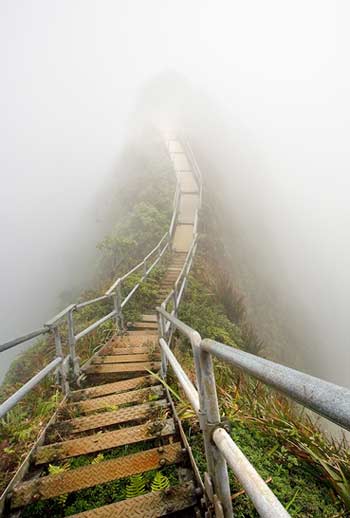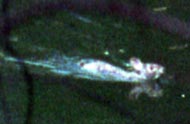News and Site Updates Archive 2009/09/15
A positive attitude may not solve all your problems, but it will annoy enough people to make it worth the effort.
- Herm Albright
15 Sep '09 - On 20 August 2009, Abdelbaset Ali Mohmed Al Megrahi,
the convicted Lockerbie bomber, was released by the Cabinet Secretary for Justice in Scotland, Kenny
MacAskil, on compassionate grounds due to terminal prostate cancer. But does Megrahi really have terminal cancer? Was he released because of an oil deal between Britain and Colonel Gaddafi's
son? Was he hailed as a hero back home in Libya? There is SO MUCH more to the story than what is generally reported. I urge you to
go read it. Basically, I gather Megrahi was released because he was innocent and "the truth" coming out during
the appeal could prove embarrassing to Britain and the US. Of course there were oil and arms deals under way with Libya; but had Megrahi proceeded with his appeal, some 600 pages of new and deliberately
suppressed evidence would have set the seal on his innocence and given more than a glimpse of how and why he was stitched up for the benefit of "strategic interests." (As an example, most of the staff
of the US embassy in Moscow who had reserved seats on Pan Am flights from Frankfurt cancelled their bookings when they were alerted by US intelligence that a terrorist attack was planned.) Wouldn't life
be a LOT simpler if lying invariably made your face turn bright red? Courts would likely convene in a darkness lit by coloured bulbs to "protect everyone's rights".

Stairway to Heaven: The Haiku Trail in the mountains of Oahu, Hawai'i
  Warmer seas, increased tropical rainfall, fewer subtropical clouds, stronger trade winds — all seem connected to
the sun's roughly 11-year cycle, whose ebbs and flows in sunspots result in solar output
variations. Since variations are only 0.2 watt per metre2 that's too little to explain effects. However, ozone in the tropical stratosphere traps slightly
more heat as increased ultraviolet sunlight warms its surroundings. This causes global ozone production to increase by 2%, affecting stratospheric circulation, which alters tropospheric
circulation, which then changes wind patterns near the ground. The reason this is important is that the sun should have sunspots by now but still doesn't. Do we need global warming to stave
off an ice age which could cause the deaths of billions - or is the sunspot thing a fluke that will go away tomorrow or in a decade and if global warming isn't reined in, resulting changes could cause the
deaths of billions? (Or is it somewhere in between?) To acquire more knowledge about this situation would appear to be useful... In 1874, the first US zoo opened to great fanfare in
Philadelphia. With bands playing and flags fluttering, thousands arrived to see exotic wallabies, kangaroos, bears, and an Indian elephant. In the 75 years following, others rushed in as American
zookeepers engaged in animal "stamp collecting" - the goal: to acquire as many species as possible, housing them, often alone, in simple cages - one of this, one of that, one of the next thing, just so you
could see what a tiger looked like. But in 1979, Kiki the gorilla stepped into a different world. Held captive for years in concrete and bars at Woodland Park Zoo in Seattle, he now had a lush
exhibit - grass and stream designed to resemble wild Africa where he briefly lived. Gorillas loved it and so did visitors. But it caused a major problem - sometimes the animals hid from view. Warmer seas, increased tropical rainfall, fewer subtropical clouds, stronger trade winds — all seem connected to
the sun's roughly 11-year cycle, whose ebbs and flows in sunspots result in solar output
variations. Since variations are only 0.2 watt per metre2 that's too little to explain effects. However, ozone in the tropical stratosphere traps slightly
more heat as increased ultraviolet sunlight warms its surroundings. This causes global ozone production to increase by 2%, affecting stratospheric circulation, which alters tropospheric
circulation, which then changes wind patterns near the ground. The reason this is important is that the sun should have sunspots by now but still doesn't. Do we need global warming to stave
off an ice age which could cause the deaths of billions - or is the sunspot thing a fluke that will go away tomorrow or in a decade and if global warming isn't reined in, resulting changes could cause the
deaths of billions? (Or is it somewhere in between?) To acquire more knowledge about this situation would appear to be useful... In 1874, the first US zoo opened to great fanfare in
Philadelphia. With bands playing and flags fluttering, thousands arrived to see exotic wallabies, kangaroos, bears, and an Indian elephant. In the 75 years following, others rushed in as American
zookeepers engaged in animal "stamp collecting" - the goal: to acquire as many species as possible, housing them, often alone, in simple cages - one of this, one of that, one of the next thing, just so you
could see what a tiger looked like. But in 1979, Kiki the gorilla stepped into a different world. Held captive for years in concrete and bars at Woodland Park Zoo in Seattle, he now had a lush
exhibit - grass and stream designed to resemble wild Africa where he briefly lived. Gorillas loved it and so did visitors. But it caused a major problem - sometimes the animals hid from view.
An estimated 15 million people died worldwide in 2002 due to bacterial infections that could not be treated by available drugs, according to figures from the World Health Organization. In the US,
more than 300,000 people die each year from infectious diseases such as influenza and pneumonia; many of these deaths are caused by drug-resistant bacteria. Governments could provide financial incentives to drug companies to develop new antibiotics - something drug
companies don't normally find to be lucrative because these take years to develop, yet can only be prescribed for a short time before becoming obsolete when bacteria change to survive... Over the past 4
years, pandemic preparations have focused on responding to worst case scenarios so we responded to the H1N1 outbreak as an unfolding disaster - some countries erected port of entry quarantines while others
advised against non-essential travel to affected areas and closed schools and businesses. But pandemic A/H1N1
is significantly different than the pandemic predicted. Pandemic A/H1N1 virus isn't a new subtype but the same subtype as seasonal H1N1, around since 1977. Furthermore, a lot of people are
likely immune. The 1918 pandemic was a type 1 epidemic: severe disease affecting many people, while SARS was a type 2 epidemic: infecting few, mostly severe disease. The
H1N1 pandemic may prove to be a type 3 epidemic: affecting many, mostly mild. Public health responses not calibrated to the threat may be perceived as alarmist, eroding public trust and
resulting in the public ignoring important warnings when serious epidemics happen in the future. It occurs to me that certain drug companies stand to make a sizable profit from vaccines they produce for
this mild pandemic (some countries are even mandating vaccinations). Perhaps these big pharmaceuticals will use some of that money to develop a few critical antibiotics that the human race
desperately needs. (Maybe that was even the agreement beforehand - with this "designated pandemic" a way to divert big money to those companies in this cash-strapped environment.)
  A toxic cocktail of ultrafine
particles lurks inside road tunnels in concentration levels so high they
can harm drivers and passengers. Effects can range from minor respiratory problems in healthy people to acute myocardial infarction (heart attack) in people with existing heart complaints. Drivers
and occupants of new vehicles which have windows closed are safer than people in older vehicles (in terms of tightness) and those riding motorcycles, driving convertibles, or walking - all of whom
are exposed to incredibly high concentrations... When you eat something, it goes into the stomach
where it's treated to an acid bath, then enzymes, and finally muscular churning to break it up. Then, it's squirted into the small intestine (orange at right), where acids are neutralised and more
enzymes added to the watery soup now called chyme. Primary job of the small intestine is to suck nutrients out of the chyme and pass them to the circulatory system. When most of the good stuff
has been leeched out, it's passed to the large intestine (salmon coloured) still watery (if you've experienced diarrhœa, that's what it is now). Primary job of the large intestine is to
resorb water from waste, condensing it into the thick, gloppy paste we know as excrement. The large intestine is basically a sewage treatment plant - except for a couple of odd dead-ends. The cecum
(pink) is a small pouch that goes nowhere and the appendix (red) is a slender projection from the cecum. It's reasonable that one function of the appendix in modern humans is as a bacterial reservoir for
recovery of gut flora after disease losses. But the fact that the appendix has an incidental useful function doesn't mean it isn't vestigial, nor does it necessarily mean its retention was selected
for. That some modern human populations have significant mortality from cholera, for instance seems relatively trivial when considering persistence of the appendix over tens of millions of years,
especially when no evidence of differential survival by individuals having or lacking one is known. A toxic cocktail of ultrafine
particles lurks inside road tunnels in concentration levels so high they
can harm drivers and passengers. Effects can range from minor respiratory problems in healthy people to acute myocardial infarction (heart attack) in people with existing heart complaints. Drivers
and occupants of new vehicles which have windows closed are safer than people in older vehicles (in terms of tightness) and those riding motorcycles, driving convertibles, or walking - all of whom
are exposed to incredibly high concentrations... When you eat something, it goes into the stomach
where it's treated to an acid bath, then enzymes, and finally muscular churning to break it up. Then, it's squirted into the small intestine (orange at right), where acids are neutralised and more
enzymes added to the watery soup now called chyme. Primary job of the small intestine is to suck nutrients out of the chyme and pass them to the circulatory system. When most of the good stuff
has been leeched out, it's passed to the large intestine (salmon coloured) still watery (if you've experienced diarrhœa, that's what it is now). Primary job of the large intestine is to
resorb water from waste, condensing it into the thick, gloppy paste we know as excrement. The large intestine is basically a sewage treatment plant - except for a couple of odd dead-ends. The cecum
(pink) is a small pouch that goes nowhere and the appendix (red) is a slender projection from the cecum. It's reasonable that one function of the appendix in modern humans is as a bacterial reservoir for
recovery of gut flora after disease losses. But the fact that the appendix has an incidental useful function doesn't mean it isn't vestigial, nor does it necessarily mean its retention was selected
for. That some modern human populations have significant mortality from cholera, for instance seems relatively trivial when considering persistence of the appendix over tens of millions of years,
especially when no evidence of differential survival by individuals having or lacking one is known.
We want our roads, bridges, tunnels, masstransit rails, dams, pipelines, sewers, canals and transmission
cables to last. When they don’t, the consequences range from irritation and anxiety to panic and disaster. But if we design infrastructure to endure forever, we may create another kind of
problem. New York bridges such as the George Washington and the Bayonne, both more than 70 years old, were built before computers were around to calculate the minimum amount of materials budget-crunched
contractors could get away with. Back then, cautious engineers simply heaped excess mass onto the bridges they imagined. These bridges are so overbuilt, traffic’s like an ant on an
elephant, By contrast, the Minneapolis bridge, half the age of those robust older spans, was already known to be crumbling before it failed. At the time of its collapse, 4 of 8 lanes were closed
for repairs to roadway deck and several weakened steel joints, the extent of deterioration hidden from public view behind tarpaulins. Although no official cause of the calamity has been identified by the
National Transportation Safety Board, the added weight of construction materials and cement trucks to evening rush hour traffic was apparently enough to break the I-35W bridge’s back. That only 13 people
died was considered miraculous. But should we risk building something enormously costly that might soon become obsolete? What if our search for energy-efficient, next-generation transportation produces a
vehicle — say a hovercraft — that renders unnecessary not only energy-gobbling transmissions and friction-prone rubber tires but possibly even roads themselves and for that matter tunnels and bridges
as well?
 |
 |
 |
Were I in the southern California area and wanted to have a house built, I would likely engage the services of architect
Marc Whitman of Ojai. The personal residence of Whitman and his wife Julia goes beyond the whimsical and into the hobbit-like.
|
  President Jimmy Carter had gone on a fishing expedition on his small farm pond in his hometown of Plains, Georgia when a swamp rabbit (a large cottontail rabbit
found in swamps and wetlands of the southern US) approached his boat hissing menacingly, teeth flashing and nostrils flared. It tried desperately to enter his boat causing Carter to flail at the
swimming creature with his oars. He found his staff at the office disbelieved his story, insisting that rabbits can't swim, or that they'd never approach a person threateningly - but a White House
photographer had captured the incident on camera. This prompted a news headline "President Attacked by Rabbit"
along with a parody of the Jaws poster labelled Paws... Fat accumulated in the abdomen appears more harmful than fat that cushions the thighs, arms or rear. Called visceral fat,
this fat is thought to be active tissue that raises the risk of insulin resistance, diabetes, and heart disease. However, new research suggests
it's not belly fat that's bad but, rather, the fat that accumulates in the liver. The
good news is, liver fat is easier to lose... It was only when early humans gave up hunter-gathering and switched to farming about 5,500 years ago that
white skin began to be favoured. This is because farmed food was low in vitamin D, a vital
nutrient. Humans can make this in their skin when exposed to sunlight, but dark skin is much less efficient at it. In places such as northern Europe, where sunlight levels are low, the ability
to make vitamin D more efficiently was crucial to survival, so Europeans learned to prefer lighter-skinned mates... If you consider that there has been an average of 160,000 troops in the Iraq theatre
of operations during the past 22 months, and a total of 2,112 deaths, that gives a firearm death rate of 60 per 100,000 soldiers. The firearm death rate in Washington, DC is 80.6 per 100,000 for the
same period. That means you are about 25% more likely to be shot and killed in the US capital, which has
some of the strictest gun control laws in the US, than you are in Iraq. Conclusion: “The US should pull out of Washington.” President Jimmy Carter had gone on a fishing expedition on his small farm pond in his hometown of Plains, Georgia when a swamp rabbit (a large cottontail rabbit
found in swamps and wetlands of the southern US) approached his boat hissing menacingly, teeth flashing and nostrils flared. It tried desperately to enter his boat causing Carter to flail at the
swimming creature with his oars. He found his staff at the office disbelieved his story, insisting that rabbits can't swim, or that they'd never approach a person threateningly - but a White House
photographer had captured the incident on camera. This prompted a news headline "President Attacked by Rabbit"
along with a parody of the Jaws poster labelled Paws... Fat accumulated in the abdomen appears more harmful than fat that cushions the thighs, arms or rear. Called visceral fat,
this fat is thought to be active tissue that raises the risk of insulin resistance, diabetes, and heart disease. However, new research suggests
it's not belly fat that's bad but, rather, the fat that accumulates in the liver. The
good news is, liver fat is easier to lose... It was only when early humans gave up hunter-gathering and switched to farming about 5,500 years ago that
white skin began to be favoured. This is because farmed food was low in vitamin D, a vital
nutrient. Humans can make this in their skin when exposed to sunlight, but dark skin is much less efficient at it. In places such as northern Europe, where sunlight levels are low, the ability
to make vitamin D more efficiently was crucial to survival, so Europeans learned to prefer lighter-skinned mates... If you consider that there has been an average of 160,000 troops in the Iraq theatre
of operations during the past 22 months, and a total of 2,112 deaths, that gives a firearm death rate of 60 per 100,000 soldiers. The firearm death rate in Washington, DC is 80.6 per 100,000 for the
same period. That means you are about 25% more likely to be shot and killed in the US capital, which has
some of the strictest gun control laws in the US, than you are in Iraq. Conclusion: “The US should pull out of Washington.”
On 22 July 1975, Stanley J Forman was a photographer for an American newspaper, the Boston Herald, when a police scanner
picked up an emergency: “Fire on Marlborough Street!” 19-year-old Diana Bryant and her 2-year-old goddaughter Tiare Jones were on the fire escape awaiting rescue. Unfortunately, the ladder knocked
the fire escape from the wall as the two were stepping onto it and Diana fell to her death (Tiare lived only because Diana broke her fall). Stanley had been poised to get a photo of the rescue but
instead found himself with a photo of two people in mid-air, falling helplessly. This photo (click once to view) garnered Stanley Forman a Pulitzer Prize. Why? Because he didn't get distracted and remembered to press the shutter? I am reminded of
another
prize-winning photo (click once to view) - that taken by Kevin Carter of a vulture waiting for a starving child to die and also the photo (click once to view) of Omayra
Sanchez, a Columbian 13-year-old trapped due to a volcanic eruption up to her neck in water by concrete and other debris pinning her legs. Omayra took 3 days to succumb to gangrene and
hypothermia. What makes these photos all prize winners? Because they're so horrifying that they're memorable and because they prompted change in the situations that allowed them to
occur. Nevertheless, this reminds me of Kate Winslet: Not only did she appear in an episode of Extras as herself starring in a holocaust movie because she believed that is what it would take for
her to bring an Oscar statue home, she then went and starred in a holocaust movie which earned her an Oscar. Sometimes established prizes lose focus on their original purpose and are awarded for
emotional shock value rather than a reasoned and impartial judgment of worth. This can be quite unfair to artists because later works, unhonoured, never quite measure up though they may, in fact, be
technically superior.
 |
 |
 |
A great picture of the Golden Gate Bridge
in the fog. (The sky isn't bad, either.)
|
Phrynocephalus mystaceus is an agamid lizard found in Iran, North Afghanistan,
Eastern Caucasus, Kazakhstan and possibly south of Astrakhan Oblast (a province of Russia). It can reach up to 24 centimetres in length.
|
Aerial view of a neighbourhood on the outskirts of Kandahar, Afghanistan. Kandhar may derive its name from the Pashto
pronunciation of Alexandria, or Iskanderiya. A temple to the deified Alexander and Greek and Aramaic inscriptions were discovered in the old citadel. Photo dated 4 June 2009.
|

 The flag of New York City combines the colours orange, white, and blue arranged in perpendicular bars of equal dimensions (the blue
being nearest to the flagstaff) with the standard design of the seal of the city in blue upon the middle, or white bar, bearing the number 1625 (the year of the establishment of New Amsterdam), which colours
shall be the same as those of the flag of the United Netherlands in use in the year 1625. The words "Sigillum Civitatis Novi Eboraci" mean "Seal of the City of New York"... The secret to growing hearty tomatoes is remarkably close at hand. Look no
further than your fireplace and, er, your bladder. Human urine and wood ash make a reasonably potent tomato fertiliser, boosting plant growth nearly on a par with regular fertiliser. The product
of a single individual's micturition could fertilise 6,300 tomato plants a year, yielding more than two tons of fruit... If you find yourself being pulled away from shore by a powerful rip current, what should you do? The
traditional advice has been to swim parallel to the shore in order to get outside the current. But after an extensive study of these currents, the conclusion is that your odds are better if you stay
still and just tread water... To explore why some works of art top the charts while others languish in the
discount bin, a website was created where thousands of subjects could listen to obscure songs. Half the group simply downloaded tunes they liked. The other half did the same, but could see
how many times each song had already been downloaded. The second group tended to choose the most popular songs, creating a snowball effect for tunes picked by the first listeners - a natural shortcut
out of the tremendous consumer-choice overload we face... Some companies are quite unhelpful (very short, and you don't need to
listen to it - just watch)... Why bike shorts are black (photo - click once). The flag of New York City combines the colours orange, white, and blue arranged in perpendicular bars of equal dimensions (the blue
being nearest to the flagstaff) with the standard design of the seal of the city in blue upon the middle, or white bar, bearing the number 1625 (the year of the establishment of New Amsterdam), which colours
shall be the same as those of the flag of the United Netherlands in use in the year 1625. The words "Sigillum Civitatis Novi Eboraci" mean "Seal of the City of New York"... The secret to growing hearty tomatoes is remarkably close at hand. Look no
further than your fireplace and, er, your bladder. Human urine and wood ash make a reasonably potent tomato fertiliser, boosting plant growth nearly on a par with regular fertiliser. The product
of a single individual's micturition could fertilise 6,300 tomato plants a year, yielding more than two tons of fruit... If you find yourself being pulled away from shore by a powerful rip current, what should you do? The
traditional advice has been to swim parallel to the shore in order to get outside the current. But after an extensive study of these currents, the conclusion is that your odds are better if you stay
still and just tread water... To explore why some works of art top the charts while others languish in the
discount bin, a website was created where thousands of subjects could listen to obscure songs. Half the group simply downloaded tunes they liked. The other half did the same, but could see
how many times each song had already been downloaded. The second group tended to choose the most popular songs, creating a snowball effect for tunes picked by the first listeners - a natural shortcut
out of the tremendous consumer-choice overload we face... Some companies are quite unhelpful (very short, and you don't need to
listen to it - just watch)... Why bike shorts are black (photo - click once).
How can one escape a dilemma in which multiple individuals acting in their own rational self-interest can ultimately
destroy a shared limited resource — even when it's clear this serves no one in the long run? Each family has a house and a small plot of land to grow vegetables. In addition, a large, common area
is used by all villagers to graze their livestock. Each villager has a cow or two to provide the family with milk. The common area is large enough to support the entire village - but the village
begins to grow; families get larger and get an extra cow. New families move in and suddenly the common is threatened; it's being overgrazed. Grass is consumed so fast, there isn't enough time for
it to replenish itself before rains erode the topsoil. No cow has quite enough to eat and they all give less milk than before. If this overuse continues, there'll be a slow, sure decrease in the
number of animals it can support until, finally, it's useless for grazing. From the point of view of an individual villager, since he needs the milk from his 2 or 3 cows even if they produce less than
before, less beats nothing. Besides, how much difference will it make if only he shows restraint in use of the common? So, commons problems are marked by conflicts between individual and
collective interests and between short-term and long-term interests. Unfortunately, we're now dealing with a tragedy of global commons. Which brings up the point of how connected global transportation, power, communications and financial markets
have become. Each component of each sector assesses risk for its particular piece under the assumption that the rest of the system will continue as always even if one small contribution goes off the
rails. We now know, however, about the possibility of cascading "knock on" failures. We don't yet know how to assess the risk for them, nor how best to quickly stop the spread of damage once
begun - but recognising the problem is an important step. Failing to deal with systemic risk will create a world that is not only uncertain, but also unjust, in that individual firms can generate
immense profits by taking risks that everyone else ends up bearing as well.
 |
 |
 |
These desert islands, called kaluts, are located in the Dasht-e Lut Desert in Iran and are an example of wind erosion. A
NASA satellite recorded surface temperatures there as high as 71°C (159°F), the hottest temperature ever recorded on the surface of
the earth.
|
This is a woodland in northern Iran. 18th largest country in area (1,648,195 km²), Iran has a population of 70+
million. It's bordered on the north by Armenia, Azerbaijan and Turkmenistan (Kazakhstan and Russia are northern neighbours across the Caspian Sea); on the east by Afghanistan and Pakistan,
on the south by the Persian Gulf and Gulf of Oman, and on the west by Turkey and Iraq.
|
This is Tehran, Iran at dusk.
Iran is home to one of the world's oldest continuous major civilisations, with historical and urban settlements that date back
9,000 years.
|
  Build a road that starts flat and curves slowly upward. As the dragster speed builds, the road
curves up steeper and steeper. The vehicle should be equipped with spoilers shaped not for lift but for down pressure, to lend added frictional force against the roadway-runway. Given sufficient
power train and speed, the right road curve and spoiler aerodynamics, the dragster just might be driveable vertically
skyward. In fact, "a 2001 Bentley EXP Speed 8 at 150 miles per hour develops a reported 3,094 pounds of down force. Since the car weighs only 2,020 pounds, there should [theoretically] be no
problem even driving it upside down!" - Mechanical and computer engineering specialist Ian Charnas... An aircraft's
lifespan is measured not in years but in pressurisation cycles (usually based on takeoff-and-landing cycles). The fuselage is most susceptible to fatigue, but the wings are too, especially on short
hauls where an aircraft goes through pressurisation cycles every day. Aircraft used on longer flights experience fewer pressurisation cycles, and can last more than 20 years. Non-destructive
evaluation (NDE) inspections use ultrasonic waves to reveal developing defects... A publicly funded burial isn't the only option for families faced with insurmountable funeral expenses. Donating a
body to scientific or medical research is free and somewhat glamorous. At Vanderbilt, where the medical school cadavers are honoured with a yearly prayer service and eventual burial in a
university-owned cemetery plot, a spokeswoman said the school has been "inundated" with donated cadavers to the point that it has stopped accepting new bodies. At the University of Tennessee, donations to the
school's famed Body Farm — where forensic researchers study cadavers in every imaginable stage of
exposure or decay — have increased steadily since 2000; the recession has created a spike in donations and the 1.3-acre facility, which studies cadavers under various environmental and terrain conditions, is
at capacity. They aren't accepting any new donations because they don't have any room. But there are other
alternatives. Build a road that starts flat and curves slowly upward. As the dragster speed builds, the road
curves up steeper and steeper. The vehicle should be equipped with spoilers shaped not for lift but for down pressure, to lend added frictional force against the roadway-runway. Given sufficient
power train and speed, the right road curve and spoiler aerodynamics, the dragster just might be driveable vertically
skyward. In fact, "a 2001 Bentley EXP Speed 8 at 150 miles per hour develops a reported 3,094 pounds of down force. Since the car weighs only 2,020 pounds, there should [theoretically] be no
problem even driving it upside down!" - Mechanical and computer engineering specialist Ian Charnas... An aircraft's
lifespan is measured not in years but in pressurisation cycles (usually based on takeoff-and-landing cycles). The fuselage is most susceptible to fatigue, but the wings are too, especially on short
hauls where an aircraft goes through pressurisation cycles every day. Aircraft used on longer flights experience fewer pressurisation cycles, and can last more than 20 years. Non-destructive
evaluation (NDE) inspections use ultrasonic waves to reveal developing defects... A publicly funded burial isn't the only option for families faced with insurmountable funeral expenses. Donating a
body to scientific or medical research is free and somewhat glamorous. At Vanderbilt, where the medical school cadavers are honoured with a yearly prayer service and eventual burial in a
university-owned cemetery plot, a spokeswoman said the school has been "inundated" with donated cadavers to the point that it has stopped accepting new bodies. At the University of Tennessee, donations to the
school's famed Body Farm — where forensic researchers study cadavers in every imaginable stage of
exposure or decay — have increased steadily since 2000; the recession has created a spike in donations and the 1.3-acre facility, which studies cadavers under various environmental and terrain conditions, is
at capacity. They aren't accepting any new donations because they don't have any room. But there are other
alternatives.
Music is a sure way to influence human emotions. Musical elements even convey the emotional content in
our speech. Studies show that babies too young to understand words can interpret a long tone and a descending pitch as soothing and a short tone as inhibiting. We use legato (long tones) with
babies to calm them and staccato to order them to stop. Approval has a rising tone; soothing is decreasing in tone. We add musical features to speech to influence the affective state of the
baby. Bark out, "PLAY WITH IT!" and the baby will freeze. Voice, intonation pattern, and musicality matter more than words. People look at animal communication in terms of conveying
information – "I'm hungry" or "I'm afraid" - but it's much more than that. A cellist with the National Symphony Orchestra composed music using specific features in the calls of cotton-top tamarin
monkeys (in other words, he made "monkey music"). It induced a relatively long-term change in behaviour in them (they relaxed and ate more). Similarities in communications between
monkeys and people suggest deep evolutionary roots for musical elements of speech. (Does the instant availability of exactly the relaxing music you want to hear help explain the epidemic of obesity if
it proves that relaxing music induces humans to eat more as
well?)... 4 out of 5 people see nothing wrong with
stealing from their workplace. More than half think it acceptable for a carer to persuade an elderly person to rewrite their will. A fascinating insight into Britain's "moral compass" also
found that 1 in 3 have downloaded music illegally and 13% have shoplifted. The findings, from an online study of more than 15,000 people, suggest that the typical Briton is less honest and more confused
than most people realise. It also shows that the concept of honesty varies hugely from person to person. (Always remember - the world you live in is the one YOU help create! If you want to
live in a world full of honest people, you must start by being as honest yourself as you are able.)
 |
 |
|
At some time in their lives 30-50% of people in just about every culture meet
current psychiatric diagnostic criteria for depression. Why is it so common? Can it have survival value? Apparently the answer is yes - in fact, in most instances it isn't a
disorder at all. Depressed people often think intensely and persistently about their problems; these thoughts are called ruminations and are highly analytical, breaking down complex problems
into smaller components to be considered one at a time - a very productive style of thought. People who get depressed working on complex problems in an intelligence test tend to score higher:
the depression helps neurons fire continuously (by providing fuel and maintenance) thus reducing distractions. Depressive symptoms are really a way to encourage you to be alone with your
thoughts until you reach a solution to the problems you face. |
People whose smiles were weakest in snapshots from childhood through young
adulthood were most likely to report being divorced in middle and old age. Among the weakest smilers in college photographs, 1 in 4 ended up divorcing, compared with 1 in 20 of the widest
smilers. The same pattern held among even those pictured at an average age of 10.
Co-eds whose smiles were brightest in their senior yearbook photos were most likely to be married by their late 20s, least likely to remain single into middle age, and happiest in their
marriages. |
  Bob Radocy shoots a
basketball with a prosthetic hand designed for the sport at a gym in Colorado. Mr Radocy designs and builds
prosthetic attachments that allow amputee athletes to participate in multiple sports... Kudzu
is a nuisance vine overgrowing almost 10 million acres in the southeastern US. But now scientists report that root extracts from kudzu show promise as a dietary supplement for a high-risk condition
called metabolic syndrome, which affects almost 50 million people in the US alone. People with this syndrome have obesity, high blood pressure and cholesterol, and problems with insulin. This
results in a higher heart attack, diabetes 2 and stroke risk. Kudzu contains antioxidant isoflavones that counteract this. Other
sources of isoflavones include chick peas, alfalfa, peanuts, soy beans (and tofu). Plants produce these to protect themselves against fungus and microbes; some isoflavones stimulate formation of
nitrogen-fixing root nodules. Animals that eat too many of these plants (including humans) can have reduced fertility and immune function. (How much is just enough wasn't stated)... Why is it
that people who set themselves up as moral paragons seem to have the hardest time living up to
their own standards? It’s as if a reputation for morality is a gateway into vice. People who inveigh against a vice in others are often themselves fixated on it and more likely to succumb to its
allure. Research suggests that virtuous deeds are often a form of penance for thoughts a person is ashamed of. Like a muscle, self-control tires after extended use; people are no good at
predicting the power of their own urges, whether sex, drugs, gambling, hunger, or simply spending too much. We have an inner moral regulator that prevents our moral self-image from dropping too low,
but it also keeps us from pushing it up too high. After all, we have limited resources of attention and energy and plenty of duties and desires requiring them. As soon as we feel we’ve taken care
of one, it drops down the list. So rather than thinking of moral acts as accomplishments, we should think of them as responsibilities... In the United Kingdom, Ireland, Australia and New
Zealand, the word raisin is reserved for a dried large dark grape; sultana is a dried large white grape; currant is a dried small Black Corinth
grape. Raisins are 69% sugars by weight, most of which is fructose. They are as high in antioxidants as prunes and apricots. As with all dried fruit, raisins have low vitamin C
content. They're sweet due to high sugars and if stored for long periods, those sugars crystallise. This makes them gritty, but doesn't affect usability. The grains will dissolve if raisins
are soaked in (hot) water. Bob Radocy shoots a
basketball with a prosthetic hand designed for the sport at a gym in Colorado. Mr Radocy designs and builds
prosthetic attachments that allow amputee athletes to participate in multiple sports... Kudzu
is a nuisance vine overgrowing almost 10 million acres in the southeastern US. But now scientists report that root extracts from kudzu show promise as a dietary supplement for a high-risk condition
called metabolic syndrome, which affects almost 50 million people in the US alone. People with this syndrome have obesity, high blood pressure and cholesterol, and problems with insulin. This
results in a higher heart attack, diabetes 2 and stroke risk. Kudzu contains antioxidant isoflavones that counteract this. Other
sources of isoflavones include chick peas, alfalfa, peanuts, soy beans (and tofu). Plants produce these to protect themselves against fungus and microbes; some isoflavones stimulate formation of
nitrogen-fixing root nodules. Animals that eat too many of these plants (including humans) can have reduced fertility and immune function. (How much is just enough wasn't stated)... Why is it
that people who set themselves up as moral paragons seem to have the hardest time living up to
their own standards? It’s as if a reputation for morality is a gateway into vice. People who inveigh against a vice in others are often themselves fixated on it and more likely to succumb to its
allure. Research suggests that virtuous deeds are often a form of penance for thoughts a person is ashamed of. Like a muscle, self-control tires after extended use; people are no good at
predicting the power of their own urges, whether sex, drugs, gambling, hunger, or simply spending too much. We have an inner moral regulator that prevents our moral self-image from dropping too low,
but it also keeps us from pushing it up too high. After all, we have limited resources of attention and energy and plenty of duties and desires requiring them. As soon as we feel we’ve taken care
of one, it drops down the list. So rather than thinking of moral acts as accomplishments, we should think of them as responsibilities... In the United Kingdom, Ireland, Australia and New
Zealand, the word raisin is reserved for a dried large dark grape; sultana is a dried large white grape; currant is a dried small Black Corinth
grape. Raisins are 69% sugars by weight, most of which is fructose. They are as high in antioxidants as prunes and apricots. As with all dried fruit, raisins have low vitamin C
content. They're sweet due to high sugars and if stored for long periods, those sugars crystallise. This makes them gritty, but doesn't affect usability. The grains will dissolve if raisins
are soaked in (hot) water.
The complement response is a primordial part of the immune system that attacks and destroys the organs and
vascular lining of people who have been deprived of oxygen for prolonged periods. It kicks in after the victim has been revived, in what is known as a reperfusion injury. Cells deprived of oxygen
often undergo biochemical changes, essentially marking themselves for death. When blood flow and oxygen are restored, these changes trigger the complement cascade. It works slowly but
unrelentingly, killing soldiers, infants or heart attack victims over the course of days. It exists in almost identical form in everything from seagulls to starfish. To find a way to manipulate
this pharmacologically has been like a search for the Holy Grail. Two researchers working in neighbouring labs noticed a similarity in the structure of the molecules one was using in experiments and the
other was studying. They wondered what would happen if they introduced the astrovirus shell one was studying into an assay routinely used by the other to assess complement activation. The rest, as
they say, is history... A mixture of 4 artificial sweeteners (aspartame, acesulfame K, cyclamate and saccharin) was concocted to match the taste of real sugar as closely as possible. And the
sugary and artificial drinks were administered on different days - making it harder for the tasters to notice any difference between the two. Subjects often guessed wrong on which drink was
which. They didn't know - yet functional MRI scans revealed consistent differences in how their brains responded. Both sugar and non-caloric sweeteners activate a brain region called the
amygdala, which signals sensory pleasure. But only the sugared drink turned on a cherry-sized nugget of brain tissue in a region called the caudate. That little nugget seems to represent an unconscious perception of calories - assessed quite separately from
taste.
  
Feliz: In the immortal words of Jeff Bridges, "Nice marmot."
FastFreddy: I remember telling an American once that I liked Marmite on toast for breakfast. She replied, "Don't they eat their own !@#$?" and I knew there
was a disconnect somewhere.
  
An actress who is late for an audition is driving around and around and there's no parking anywhere.
She says aloud, “Dear all powerful and merciful God please find me a place to park and I’ll do anything for you.”
As she finishes praying, a space opens up and she says, “Oh, never mind. I found one.”
  
What a strange illusion it is to suppose that beauty is goodness.
- Leo Tolstoy

For other updates click "Home" (for the latest) or "Next" (for older) below
|
 Animals
Animals Animation
Animation Art of Playing Cards
Art of Playing Cards Drugs
Drugs Education
Education Environment
Environment Flying
Flying History
History Humour
Humour Immigration
Immigration Info/Tech
Info/Tech Intellectual/Entertaining
Intellectual/Entertaining Lifestyles
Lifestyles Men
Men Money/Politics/Law
Money/Politics/Law New Jersey
New Jersey Odds and Oddities
Odds and Oddities Older & Under
Older & Under Photography
Photography Prisons
Prisons Relationships
Relationships Science
Science Social/Cultural
Social/Cultural Terrorism
Terrorism Wellington
Wellington Working
Working Zero Return Investment
Zero Return Investment


























